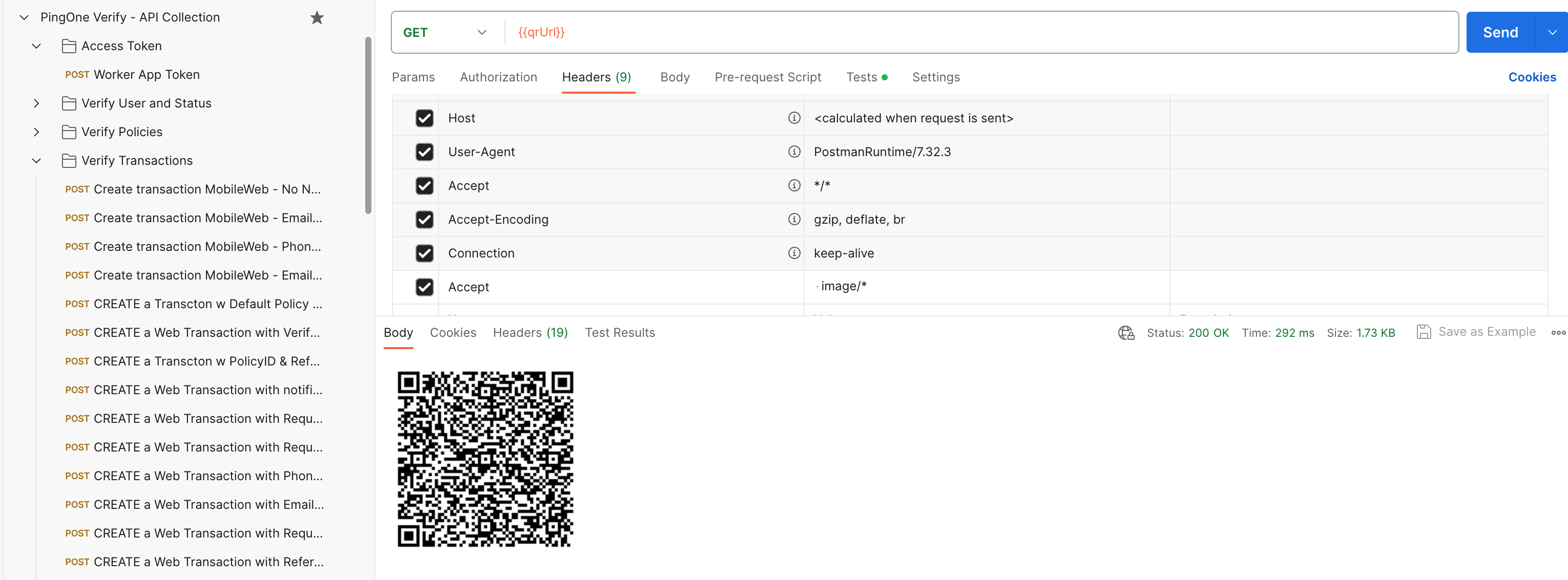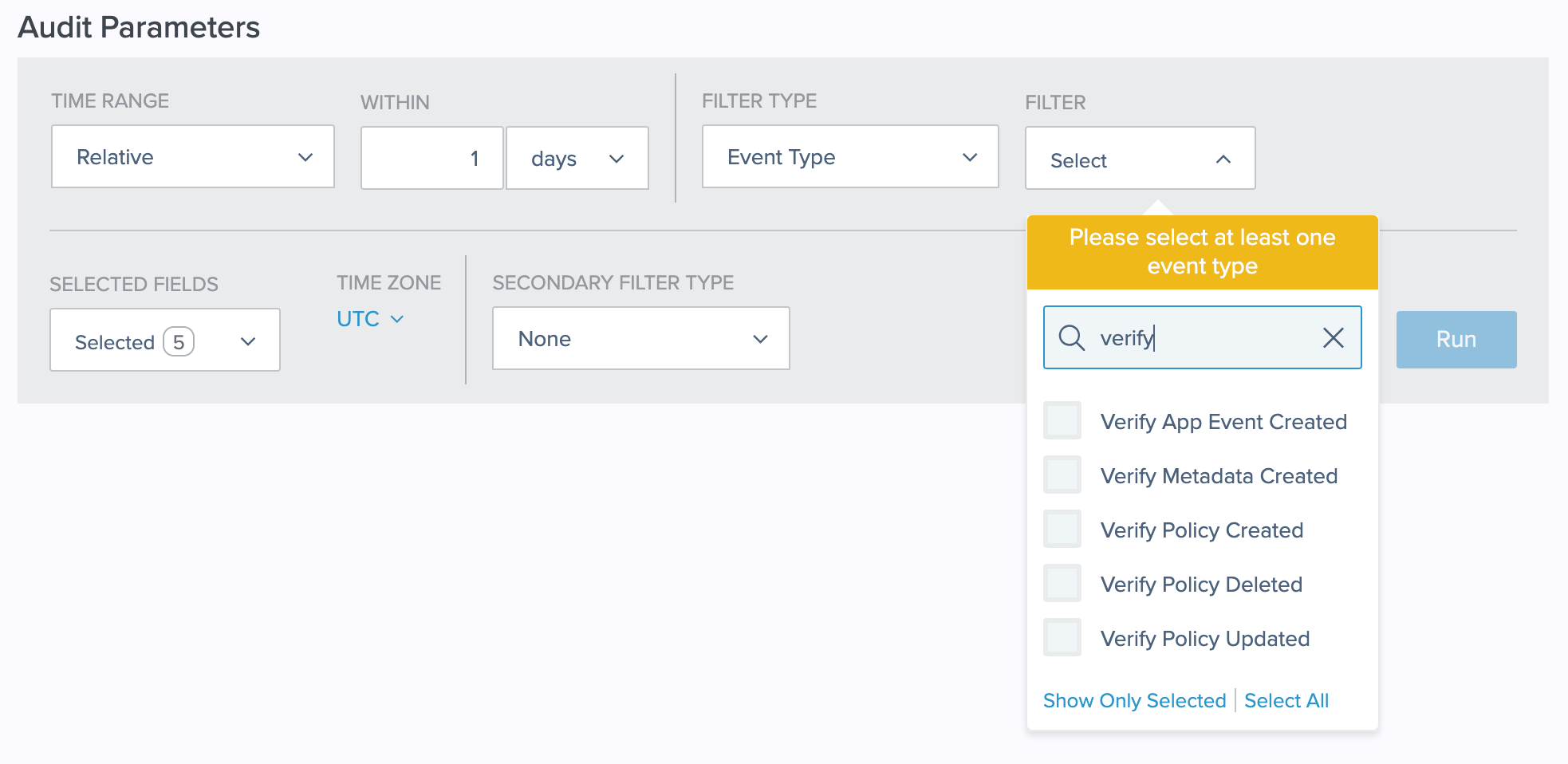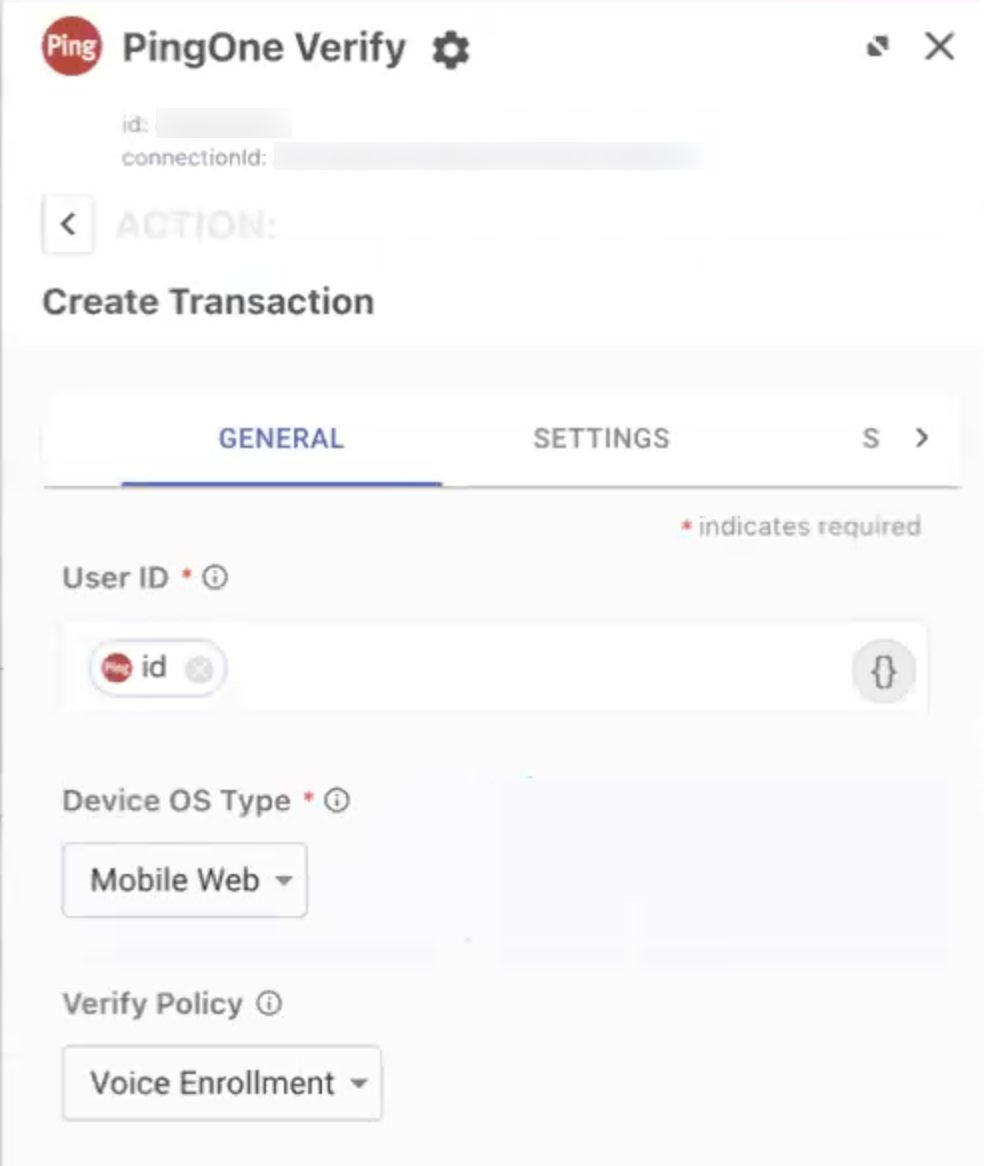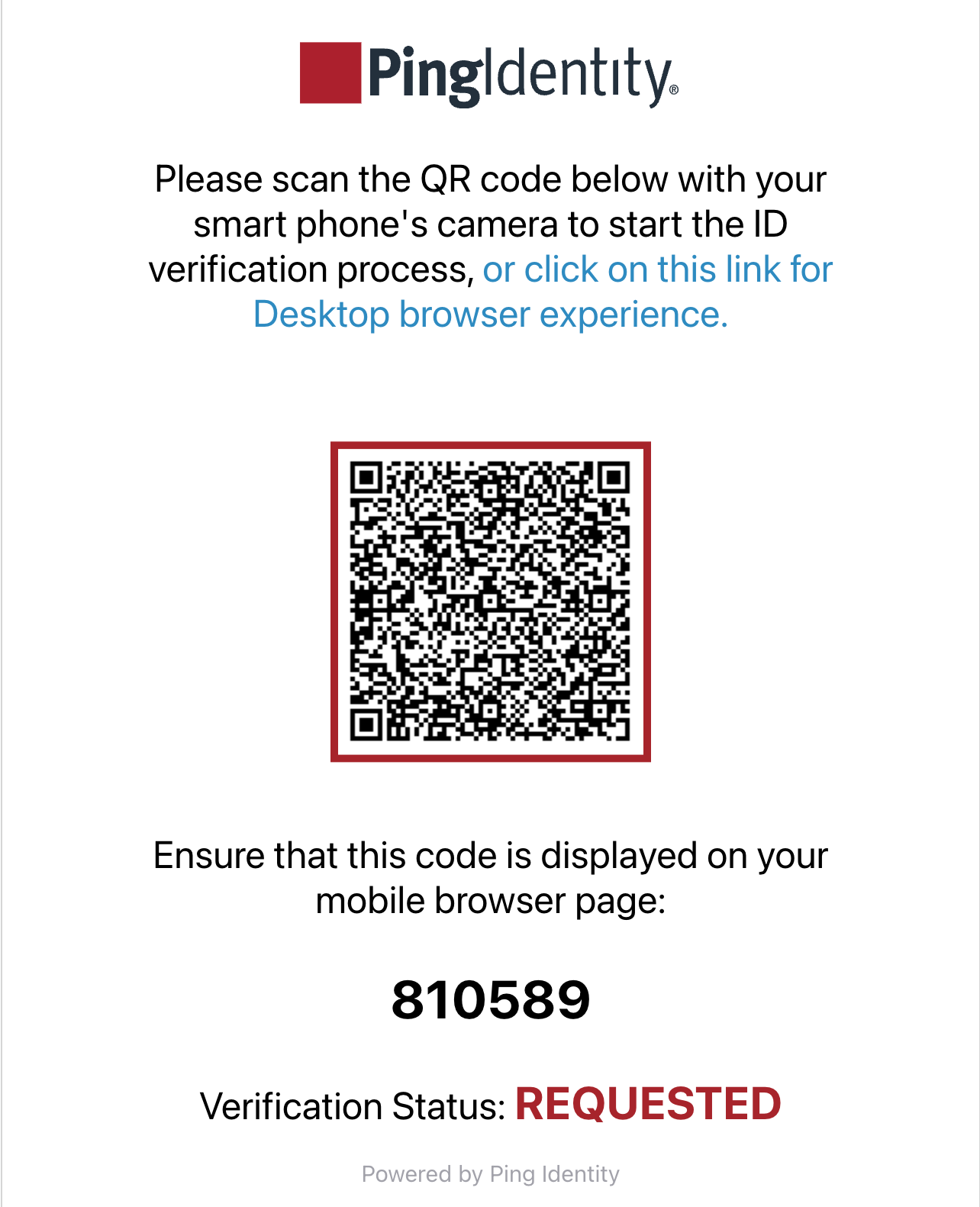Configuring PingOne Verify
Configure and integrate PingOne Verify into your user identity verification flow.
Before you begin
Regardless of the configuration method you choose, you’ll need:
-
A PingOne account with at least one environment that includes the PingOne Verify service.
For more information, see Starting a PingOne trial and Creating an environment.
-
A PingOne Verify policy.
For more information on configuring a policy, see Creating a verify policy.
About this task
There are four ways to configure PingOne Verify:
-
API integration
-
PingOne DaVinci
-
PingFederate Integration Kit
-
Mobile SDK
The configuration method that you choose depends on your role.
| Role | Configuration Method |
|---|---|
Admins and developers |
Typically use the PingOne REST API or PingOne DaVinci to get started quickly and test a verify transaction. |
PingFederate admins |
Use the PingFederate admin console to configure the PingOne Verify Integration Kit. PingFederate supplies the authentication policy and user verification status for PingOne Verify. |
Mobile developers |
Use the PingOne Verify mobile SDK (iOS or Android) to create the app your users employ for ID verification. |
-
PingOne API
-
PingOne DaVinci
-
PingFederate
-
Mobile SDK
Using the PingOne REST API
About this task
To configure PingOne Verify with the PingOne REST API:
Steps
-
Create your theme in PingOne Branding and themes to brand the PingOne Verify web experience for your end users.
-
(Optional) Use language localization to configure one or more languages and modify the PingOne Verify text fields that are presented to end users.
-
(Optional) If you enabled one-time passcode (OTP) through phone or email verification in your policy, create notification templates.
-
Trigger your first Verify transaction:
-
Download the PingOne Postman collection.
-
Note the variables you must value.
-
Obtain a PingOne access token.
Your {{authPath}} environment variable in Postman should begin with
auth.pingone. See PingOne API domains to determine the correct {{authPath}} for your region. Note that nothing trails the domain in the {{authPath}} variable. -
Create a new Verify transaction with the Create Verify Transaction API call.
Your \{{apiPath}} environment variable in Postman should begin with
api.pingone. See PingOne API domains to determine the correct \{{apiPath}} for your region. Note that the trailing/v1is required (for example,api.pingone.com/v1).For more information, see PingOne API requests.
Result:
Postman renders a QR code.

-
Scan the QR code with a smartphone camera to try the mobile web flow.
-
View the data submitted in the transaction and the scores returned from verification services.
Choose from:
-
Using the API: Use the Verified Data and Meta Data endpoints.
-
Using the PingOne admin console:
-
In PingOne, go to Environment → Audit.
-
Edit the Time Range and Within fields as needed.
-
For Filter Type, select Event Type.
-
For Filter, enter
verifyin the Search Filter Type field. -
Select any of the Verify event types.
Learn more in Event types.

-
Click Run.
-
To view the specific data and scores from an event, click View in the Details column in the report summary.
-
-
Using PingOne DaVinci
Before you begin
Add PingOne DaVinci to your PingOne environment. For more information, see Creating an environment.
About this task
To configure PingOne Verify using PingOne DaVinci:
Steps
-
Create your theme in PingOne Branding and themes to brand the PingOne Verify web experience for your end users.
-
(Optional) Use language localization to configure one or more languages and modify the PingOne Verify text fields that are presented to end users.
-
(Optional) If you enabled OTP through phone or email verification in your policy, create notification templates.
-
Import a flow template in PingOne DaVinci by downloading it from the Integration Directory: PingOne Verify quick start flow template.
-
Update the flow with your PingOne Verify policy:
-
Click the PingOne Verify
Create transactionnode in the flow. -
In the Verify Policy list, select the policy to use.

-
-
To run the flow and trigger a PingOne Verify transaction, click Try Flow.
Result:
PingOne DaVinci renders a QR code.

-
Scan the QR code on your mobile device to try the mobile web flow.
-
View the data submitted in the transaction and the scores returned from verification services.
Choose from:
-
Using the API: Use the Verified Data and Meta Data endpoints.
-
Using the PingOne admin console:
-
In PingOne, go to Environment → Audit.
-
Edit the Time Range and Within fields as needed.
-
For Filter Type, select Event Type.
-
For Filter, enter
verifyin the Search Filter Type field. -
Select any of the Verify event types.
Learn more in Event types.

-
Click Run.
-
To view the specific data and scores from an event, click View in the Details column in the report summary.
-
-
Using PingFederate
About this task
To use PingFederate to configure the PingOne Verify Integration Kit:
Steps
-
Download PingFederate and the PingOne Verify Integration Kit from the PingFederate Downloads website.
You’ll need to work with your Ping Identity account team to start a trial license for PingFederate.
Learn more about getting started in the PingOne Verify Integration Kit documentation.
Using the PingOne Verify mobile SDK
About this task
Mobile application developers use the PingOne Verify mobile SDK for iOS and PingOne Verify mobile SDK for Android to create the PingOne Verify app for their users. The app is a self-service app for iOS or Android devices that guides the user through the process of taking photos of their ID and a selfie and submitting the photos to PingOne for verification.
To use the PingOne Verify mobile SDK:
Steps
-
Run the sample app from Github:
-
Integrate the PingOne Verify mobile SDK into your own app: